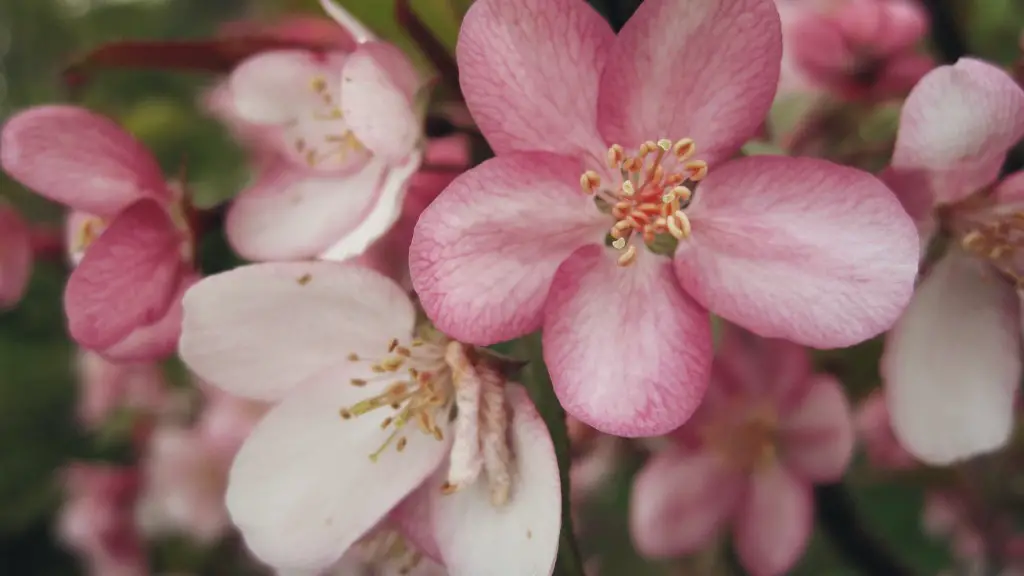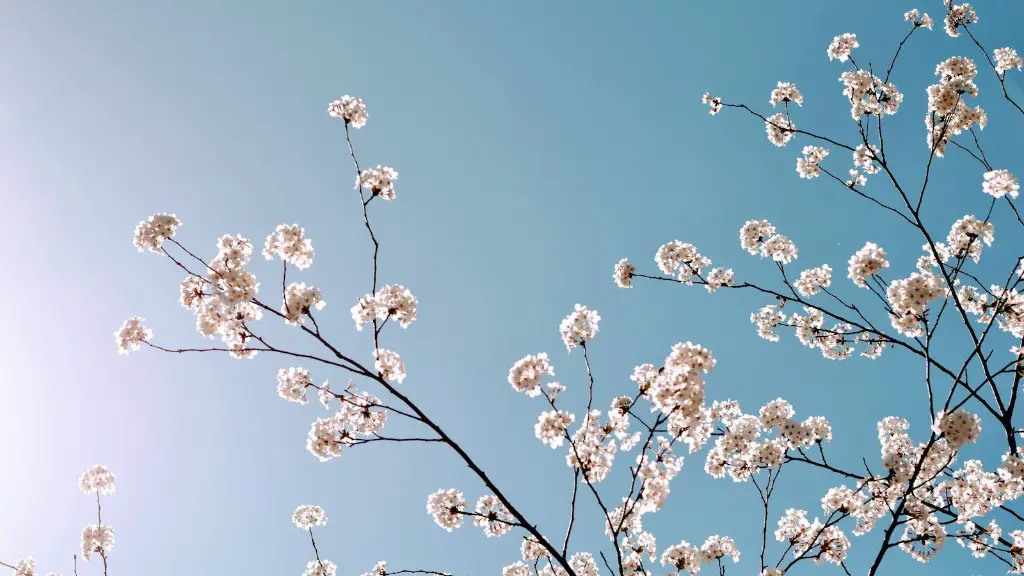Pruning
Weeping cherry trees are relatively easy to grow and care for, but there are a few simple steps that can be taken to help the correct growth and development of the tree. Pruning is one of the most critical steps in this process, as it will not only encourage the tree to grow taller, but also help prevent disease and help produce better quality fruit. To get the most out of pruning, it is important to do it correctly. Start by pruning the main trunk and top of the tree first to determine the desired shape and then prune any branches that are too low. Pruning should be done in late winter or early spring while the tree is still dormant. It is important to use sharp pruning shears, as dull blades can cause damage and increase the risk of disease in the plant. Be sure to remove dead, diseased or damaged branches, as well as any branches that are crossing or growing in the wrong direction.
Fertilizing
Fertilizing weeping cherry trees is advised to help them reach their full height potential. The best type of fertilizer for these trees is a balanced fertilizer that contains nitrogen, phosphorous and potassium in equal portions. The ideal fertilizer should provide 2-4-2 or 3-4-3 nitrogen-phosphorous-potassium ratio. A slow-release fertilizer can be used as it will break down slowly and continuously supply the tree with nutrition, as opposed to a quick-acting fertilizer, which can be too easily absorbed. When fertilizing, it is important to dispense the right amount, as too much fertilizer can burn the roots and damage or kill the tree.
Watering
Watering is one of the most important aspects of caring for a weeping cherry tree. The tree requires a significant amount of water during its initial growth stages, so it essential to water the tree regularly and thoroughly to ensure that the roots can easily absorb the moisture and nutrients they need. In order to get the most out of each watering session, it is important to distribute the water evenly, making sure that the entire root system is moist. Generally, a watering session should last 15-20 minutes and should take place once every week during dry, hot weather, as well as during the summer months. During winter, when the tree is dormant, water sessions should be reduced to every other week.
Sunlight
Weeping cherry trees require a significant amount of sunlight, as it enables them to produce the necessary energy for growth and development. Therefore, when planting the tree, it is important to choose a sunny spot with good air circulation. This will ensure that the tree will be exposed to enough sunlight and that the foliage remains dry, as wet foliage can promote the growth of fungi and disease. Additionally, shielding the tree from strong winds and harsh weather conditions will also help strengthen its structure and make it more resistant to damage.
Soil
The type of soil that the tree is planted in will also play a major role in its growth. Weeping cherry trees thrive best in slightly acidic, well-draining soils, so it is important to ensure that the soil is of the highest quality. This can be done by adding organic substances such as compost and peat moss to the soil, which will help to enrich and improve its structure. This will help the tree absorb more moisture and nutrients, which will in turn help it grow bigger and taller.
Root Training
Root training is a method that is often used to encourage a tree to grow taller. The method involves digging a hole around the root system of the tree, to allow for easier access to manage the roots. This method gives the gardener the ability to control the direction and length of the roots, which is important for the proper growth and development of the tree. Once the roots are unearthed, it is important to shape them correctly and make sure that they are not tangled. This will allow for better water absorption and will ensure that the tree will reach its full height potential.
Staking
Weeping cherry trees are relatively weak and can easily succumb to the effects of strong winds. To prevent this, staking can be used to give the tree extra support, helping it to grow bigger and healthier. This can be done by using a strong tree stake and tying the stake to the trunk with a suitable tie. The stake should be firmly secured in the soil and it should be tall enough to properly support the tree. Additionally, it is important to check the stakes regularly to make sure they are not becoming loose or slipping out of the ground.
Mulching
Mulching is a great way to keep the soil around the tree moist and healthy. It helps to prevent the sun from drying out the soil and also provides the tree with essential nutrients such as nitrogen, phosphorous and potassium. The best type of mulch for weeping cherry trees is organic material such as compost and peat moss. This will help to prevent the roots from drying out and also help to keep weeds and pests away from the tree. Additionally, mulching will reduce the amount of water evaporation from the soil, helping the tree to maintain its moisture levels during hot, dry summers.
Companion Plants
Weeping cherry trees look best when they are planted in conjunction with other shrubs and plants. Companion plants can not only increase the structural integrity of the tree, but they can also provide additional protection and support, allowing the tree to grow taller without worrying about damage. Some of the best companion plants for a weeping cherry tree are pipevines, which provide shelter and pruning support to the tree, as well as sedums, which can provide color and texture in a garden setting. Additionally, grasses and other shallow-rooted perennials can be planted around the base of the tree to promote better water absorption and help the tree better reach its full height potential.
Weeds
Weeds are a common sight in gardens and can cause a lot of damage to a weeping cherry tree. It is therefore important to take steps to prevent them from growing near the tree, as they can drain moisture and block light, affecting the tree’s growth and development. To prevent weeds from sprouting near the base of the tree, a layer of mulch can be used, as mulch will reduce the amount of sunlight available to germinating weeds, as well as prevent the spread of weed seedlings. Additionally, weeds can be controlled by pulling them out by hand, being careful not to disturb the roots of the tree.
Diseases and Pests
A weeping cherry tree can be susceptible to a variety of pests and diseases, particularly if it is not given the necessary care and attention. To minimize the risk of any pest or disease from damaging the tree, regular inspections should be carried out to identify any potential health issues. Additionally, a regular pruning schedule should be followed to help prevent the growth of disease-causing fungi, as well as to encourage better air circulation and light penetration. If any pests are found, then they should be removed immediately, preferably using organic or insecticidal methods.
Clearance Pruning
Clearance pruning involves the removal of dead, dying or diseased branches to help encourage healthier and faster regrowth of the tree. This is an important practice as it will help the tree to reach its full height potential. When clearance pruning, it is important to only remove the branches that are necessary and to make sure that the remaining branches are properly spaced, to ensure good air circulation and light penetration. Additionally, it is important to only prune when the tree is dormant, as pruning when it is actively growing can damage the tree and impede growth.
Root Pruning
Root pruning involves the judicious cutting back of some of the portions of a tree’s root system, in order to make the tree easier to manage. This is often recommended for large, older weeping cherry trees with an extensive root system, as it will help reduce the amount of labor needed to keep the tree healthy and well-balanced. When root pruning, it is important to use sharp shears and cut as close to the root system as possible, being careful not to damage any of the root tips. Additionally, it is important to ensure that the remaining root system is evenly spread and adequately spaced.
Proper Care
Finally, proper care and attention are essential for the health of a weeping cherry tree. A routine of pruning, fertilizing, watering and mulching should be followed to help the tree reach its full height potential. Additionally, pest and disease control should be a priority, as well as proper drainage and soil selection. If these guidelines are followed, then a gardener can easily enjoy the beautiful blossoms of a weeping cherry tree each spring.

